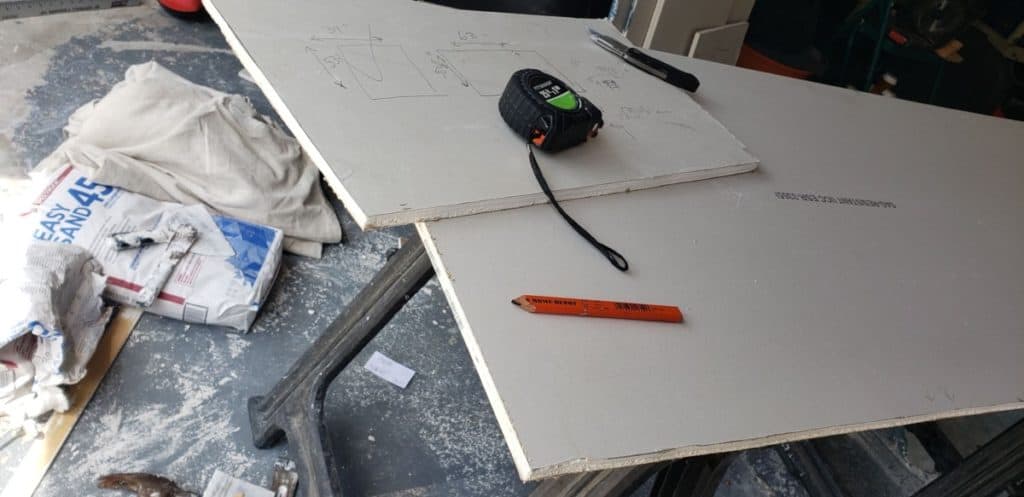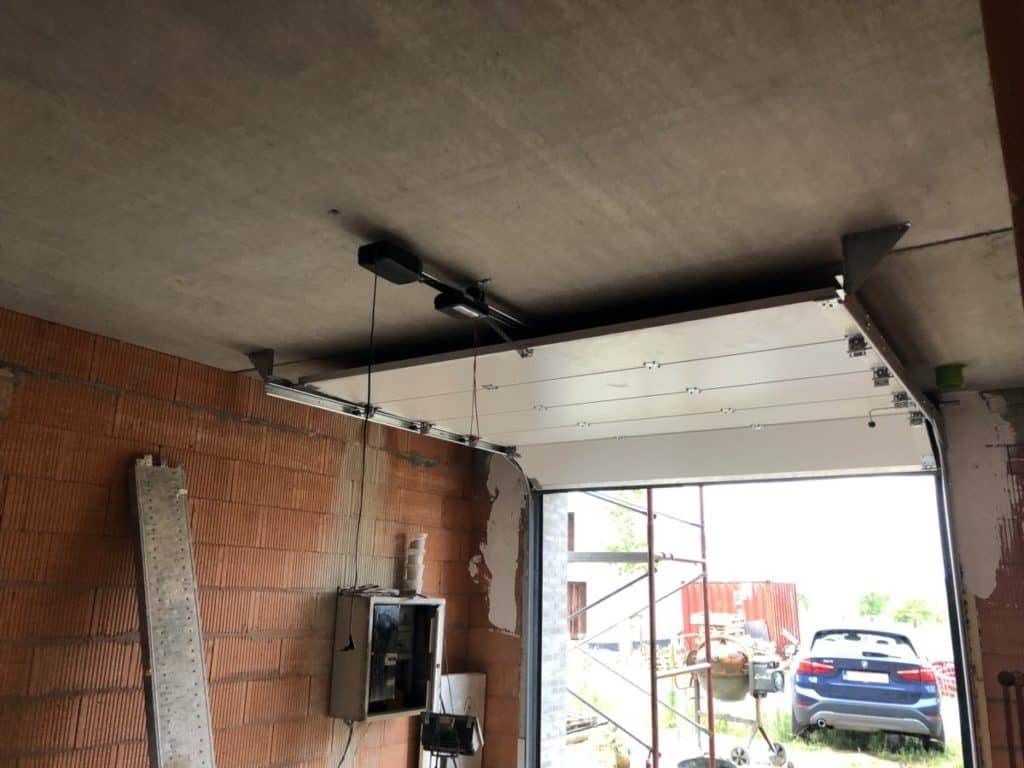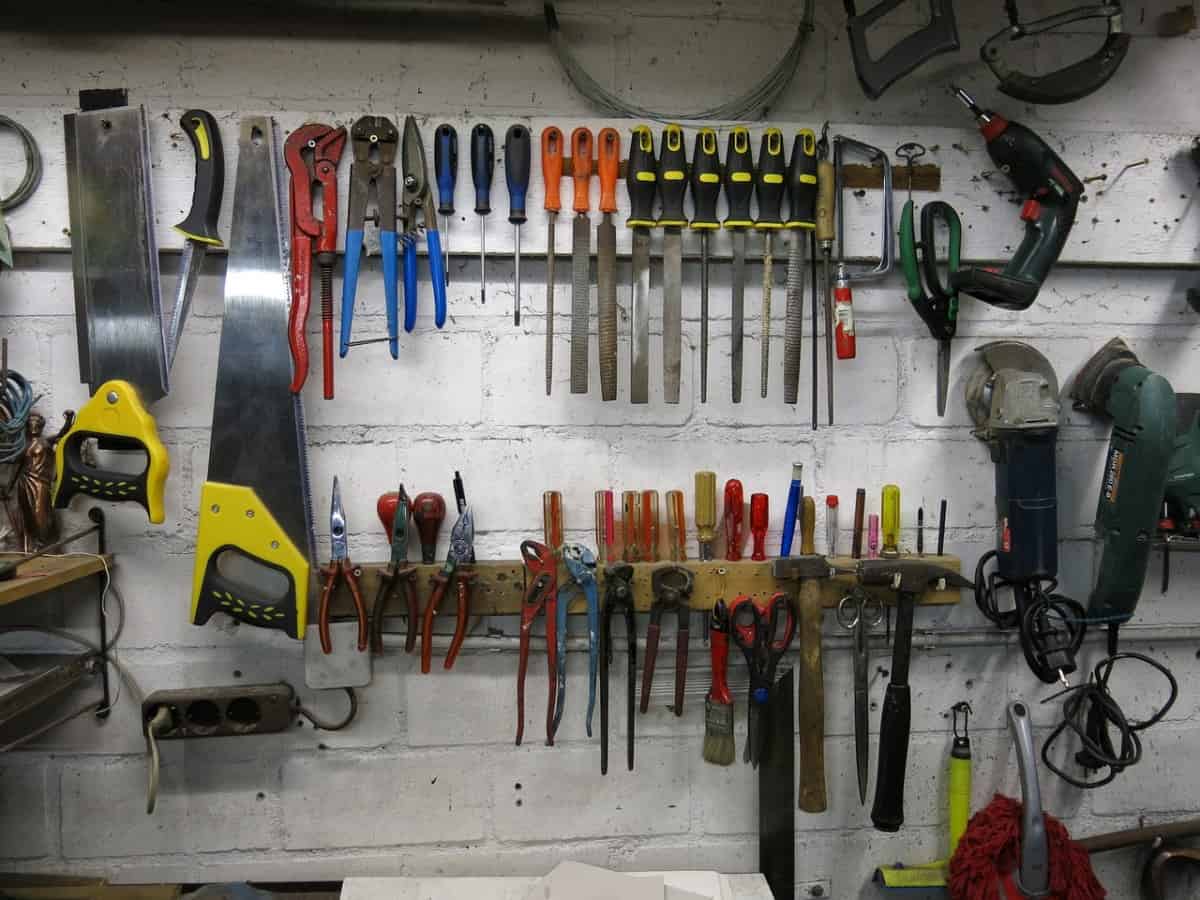When browsing DIY advice columns, chances are you’ve seen, plenty of advisors tell you to store items on your garage wall. The thing is, tools are heavy and so are all the little items you need to drill in order to keep your stuff hanging on a wall. There’s got to be a limit!
How much weight can a garage wall hold? This all depends on the type of shelving that you have, as well as the material that your garage wall holds. Garage walls are often made of either cinderblock or drywall. Drywall can hold several hundred pounds, while sturdier material can max out at approximately 650 pounds.
Before you start tacking away at your walls, it’s wise to understand what your walls can handle and how to make the most of your garage space. Materials alone can only do so much, which is why you need to get a better grip on weight physics. This quick read will help.
Table of Contents
How Much Weight Can A Garage Wall Hold?
Garage walls are a regular go-to for storage, but they still have their limits. Before you bother trying to mount anything to your wall, make sure that you know how sturdy your walls are. This can be done by checking out your garage wall material.
If you have drywall on one or more of your garage walls, it’s best not to use that for large-scale storage. On the other hand, if your garage’s walls are primarily made of cinderblock or are heavily reinforced, you can store several hundred pounds on each wall.
How Does Weight Distribution Impact Your Garage Wall Storage?
The more evenly distributed the weight of your storage is, the better. After all, two square feet can carry more weight than one. Six square feet will be able to carry more than two. The more even the weight distribution will be, the more stable your walls will be.
When Should You Avoid Garage Wall Storage?

Though garage walls can hold quite a bit of weight when they are properly cared for, there are occasions where garage walls should be avoided as a storage method. These include:
- Cracked Walls. Cracked walls are not sturdy walls. They can’t be trusted to hold the capacity they were expected to hold.
- Moldy Walls. Mold and mildew can both cause walls to lose structural integrity. It’s best not to chance it.
- Walls That Show Signs Of Stress. Are some of the studs starting to push through the drywall? Do you have the feeling that the wall isn’t as strong as it should be? Don’t risk the danger of trying to work with a dangerous wall.
- Structural Damage. You should never try to hang up an item on a wall that has known structural damage that hasn’t been fixed. This is a great way to make sure your wall collapses.
Using A Drywall Garage Wall For Storage

Drywall is aesthetically attractive, but it’s not the sturdiest material. It’s brittle and can easily break. With drywall, the amount of weight you can hold will depend on the stud. Each stud that reinforces your walls can carry between 5 to 10 pounds without hangers.
If you have light tools that you want to keep up, that won’t be a problem. However, if you want to work with larger items, this can pose a serious issue–and might even break your wall!
How To Increase Drywall Weight Capacity
If you really need to make your drywall carry some weight, there are options out there for you. It all boils down to how much you’re willing to splurge on tools and how much work you’re willing to do. Your drywall capacity improvement options include:
- Using nails and hangers. They’re a tried and true way to expand carrying a load. Walls with hangers that are attached to studs or installed in an otherwise correct manner can carry up to 20 pounds.
- Using expanding plastic sleeves. These are often used for heavy frames and bulletin boards. They can carry 10 to 20 pounds, depending on their workmanship.
- Using toggle bolts. These are a heavy-duty option that can carry up to 50 pounds per bolt. They are difficult to install but are often worth it if you absolutely need them.
- Adding reinforcement. If you’re okay with opening up the wall and adding steel trusses or similar hanging equipment behind your drywall, this can help add a wide range of different weights.
Can Drywall Work With Bracket Storage Options?
In many cases, drywall can be compatible with bracket wall-mounting storage kits. Before you get a kit, make sure that the kit is labeled as suitable for drywall. If you aren’t sure, ask a professional before you go forward.
Using Concrete And Cinderblock Walls For Storage

There are different types of cinderblock wall makes, each of which has its own maximum capacity. Cinderblocks that are hollow are not good for garage wall storage purposes at all.
These are brittle and can break with the hit of a hammer, making them dodgy as far as weight-bearing goes.
Concrete-reinforced cinderblock walls and concrete-poured walls, on the other hand, are incredibly resilient. These walls are better suited for large scale storage but will require you to install brackets that are graded for the amount of weight that you want to hold.
Can I Increase My Hollow Cinderblock Wall Storage Capacity?
Yes, kind of. If you’re remodeling, adding poured concrete reinforcements to your walls can help you bolster your capacity. If you are sticking with hollow bricks, then you only have one way to improve your maximum weight load.
The only way to safely store items on a hollow cinderblock wall is to get a structural engineer involved. They will weld plates into place on your wall that span the size of multiple blocks. You can then weld a bracket to the plates in order to hang your items on the wall.
Increasing Concrete-Reinforced Walls’ Storage Capacity
With most concrete and cinderblock walls, your best option is to look into brackets that are capable of holding your items adequately. Each bracket kit will come with tools and instructions that will help you install them successfully. In some cases, these kits can also be used with drywall.
Each bracket kit will hold a different amount of weight, depending on the workmanship and design. The majority of brackets can hold anywhere from 100 to 400 pounds, with specialty brackets from Rhino being capable of offering up a jaw-dropping 650 pounds.
What Other Storage Options Are Available For Garage Walls?
A good rule of thumb when it comes to wall storage is that it’s better to be safe than sorry. If you aren’t completely sure that your walls will be capable of storing your items, it’s better to try a different method for your storage. Some of the more popular options include:
- Ceiling Storage. If your ceiling has high-quality trusses, you might be able to put a shelving unit that hangs overhead. Much like with your walls, it’s ceiling trusses can break, so make sure that the amount you store is light.
- Floor Shelving Units. Though not ideal, having your items stored via a floor shelving unit is typically the safest way to store your goods. Since the floor is (literally) grounded, the only limit to how much you can store this way is the strength of the shelving units you have.
- Hybrid Storage. Some rare kits offer wall storage that is also reinforced by ceiling structures. Having that extra help can keep your wall intact and keep your items safe.
- Outdoor Storage. If you have a shed, it’s worth considering transferring your items to it. It might save you time and money.



0 Comments